Article Information
- Askar Zhussupbekov, Zhanbolat Shakhmov, Gulshat Tleulenova . 2017.
- Geotechnical problems on freezing ground soil and experimental investigation in Kazakhstan
- Sciences in Cold and Arid Regions, 9(3): 331-334
- http://dx.doi.org/10.3724/SP.J.1226.2017.00331
Article History
- Received: November 26, 2016
- Accepted: December 26, 2016
The deformation of underground structures of buildings is the main geotechnical problem in the seasonally freezing ground of Kazakhstan. Many factors influence the freezing–thawing of ground soil, so it is necessary to predict the values of frost heaving and freezing force. There are tangent frost heaving, vertical frost heaving, and horizontal frost heaving, all of which influence underground structures and could deform them. The value of frost heaving of a soil directly depends on its moisture content type, physical properties and chemical composition. If the pores of a soil are filled with water, the soil has an especially high susceptibility to frost.
Hydrodynamic forces of frost heaving tend to move up a foundation with relegation (cast aside in construction) soil. If statical loading links between the soil and foundation will be less than the weight of the foundation and its structures, the frozen soil layer begins to slip along the lateral surface of foundation. The resistance to this slippage in the freezing of soil and foundation defines tangent forces of frost heaving. There is a consolidation of soil with the lateral surface of an underground structure during the freezing of the soil ground, nearer the ground surface.
2 Interaction of frost heaving with retaining wallsFrost-heaving principles. Frost heaving is probably the most problematic practical consequence of soil freezing. Earlier studies of frost-heaving (e.g., Beskow, 1935) monitored its cause showing that ice-lenses form in the soil and that a thin water layer must interact between soil particles and ice so that an ice-lens may be segregated from the soils (Beskow, 1935). It once was thought that frost damage was caused by the expansion of water upon freezing, but this 9% volume change is not sufficient to explain heaves measured in frictions of a meter in length. A close examination of the soil involved in frost heave reveals a series of layers of pure ice separating soil layers. The combined thickness of the ice layers represents the total amount of frost heave, which can lift and crack building floors, foundations, pavements.
There are three necessary conditions for frost heaving: freezing temperatures, frost-susceptible soil, and the presence of water. Freezing frost heaving of ground soil could provide vertical uplifting of the foundation of a one- or two-story building. Heterogeneity of the soil and differences of freezing depth and pressure under a foundation usually produce uneven uplifting of foundation, causing the building to collapse. Even if the foundation extends deeper than freezing depth of the region, that isn't sufficient to keep the building safe because it is also important to take into account tangent frost heaving. Soil could freeze along walls of the foundation and lift it by the tangent force of frost heaving. Tangent force of frost heaving can rupture low-loading concrete piles reinforced with a wire.
The frost-susceptibility of a soil depends on the amount of fines passing the No. 200 (0.074 mm) sieve. In particular, Casagrande (1931) found that he could index the frost-susceptibility of soil as a function of the material finer than 0.02 mm. He found (see Figure 1 and Figure 2) two type deformations of retaining walls by the freezing process of soil: During freezing, a retaining wall can experience slippage or be overturned.
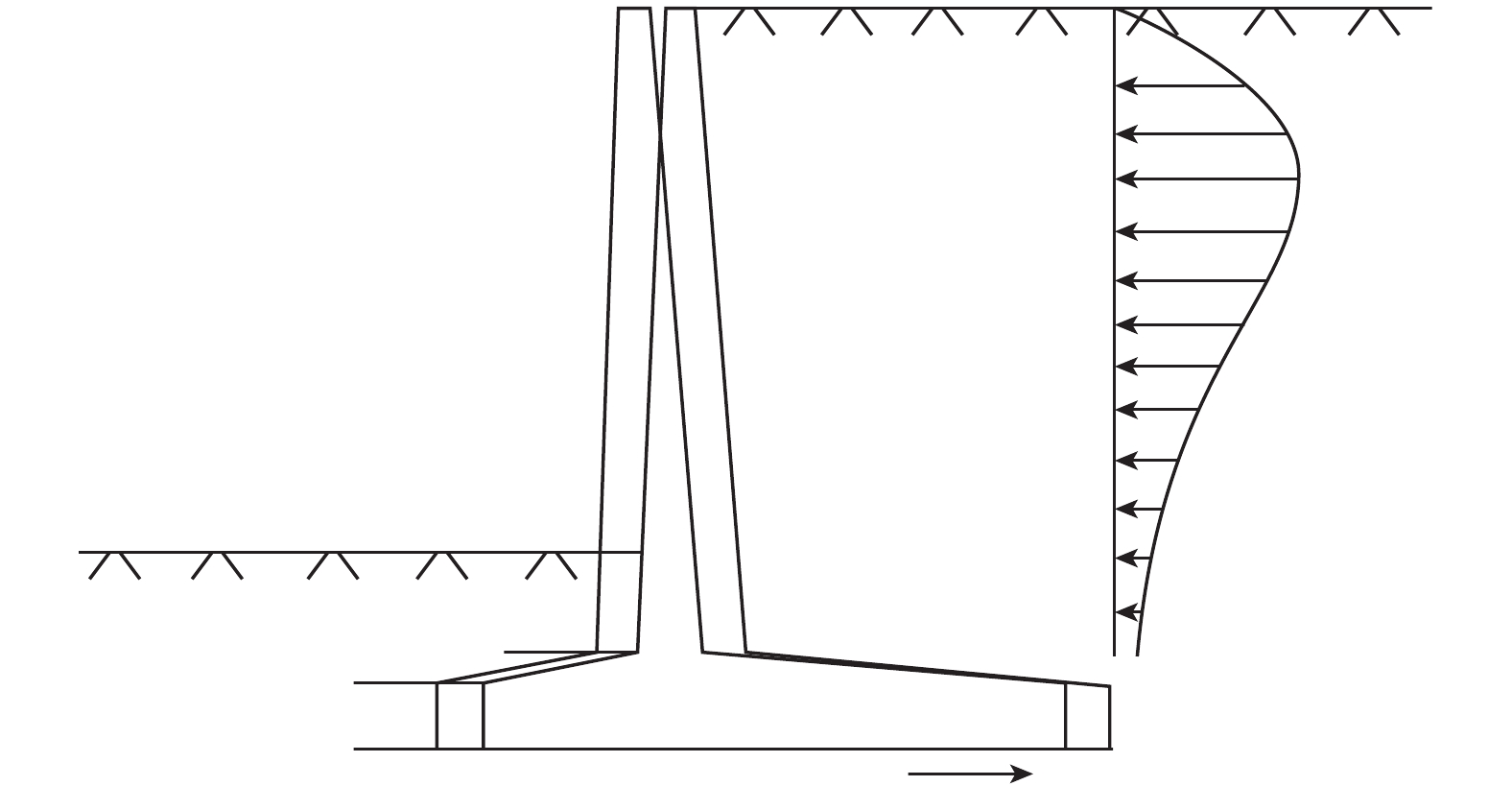
|
| Figure 1 Impact of frost heaving to a retaining wall (slippage) |
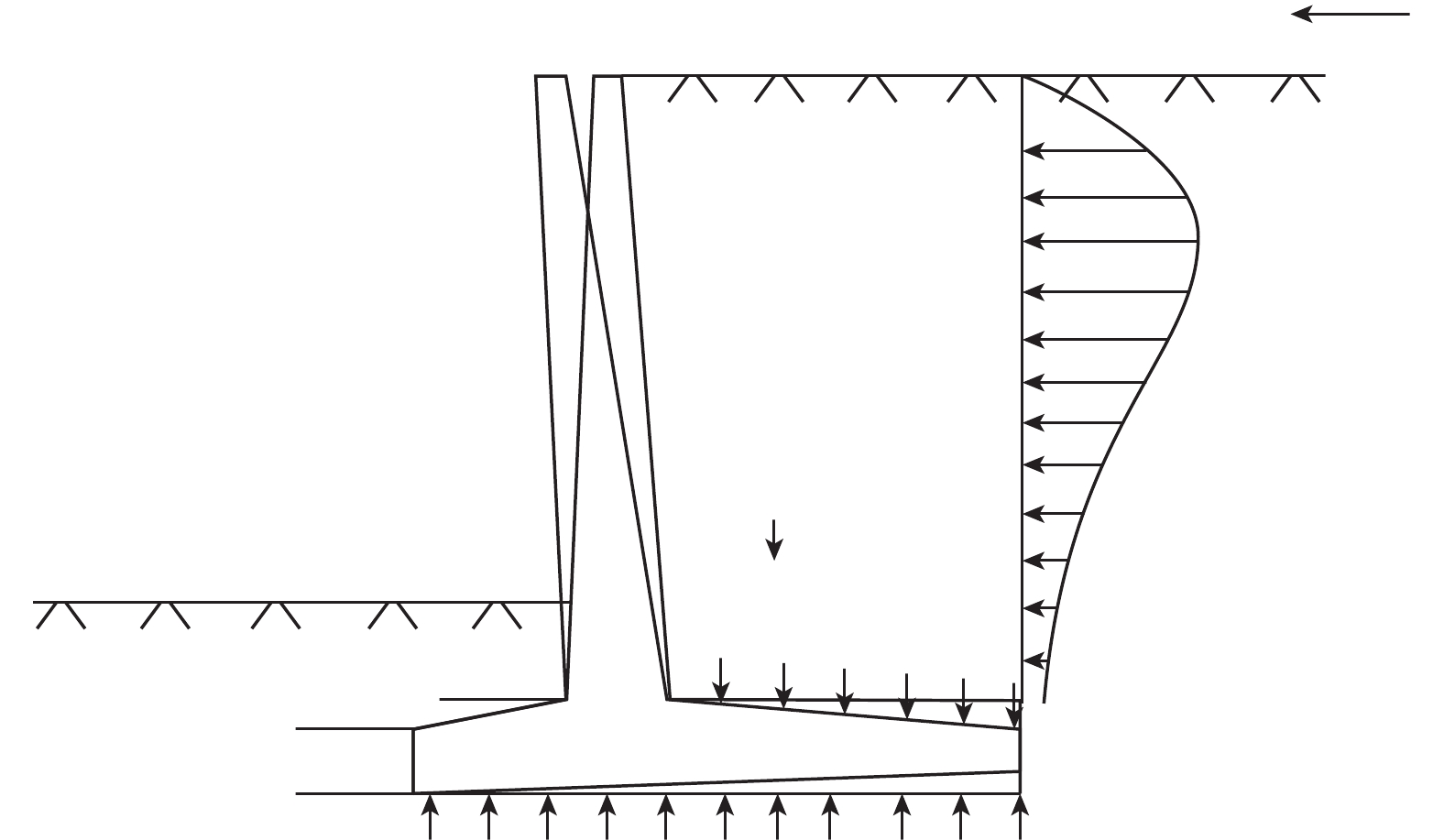
|
| Figure 2 Impact of frost heaving to a retaining wall (overturning) |
It is important to know ground soil's properties to determine its freezing susceptibility, which is important for design and construction of buildings. Frost susceptibility could be roughly estimated. (Zhussupbekov et al., 2011 ; Zhussupbekov et al., 2012 ; Zhussupbekov et al., 2013 ).
For our laboratory experiments, a special mold that can remove the side friction between soil and a retaining wall was used in the freezing test.
The basic tests for geotechnical properties of the soils were determined prior to the laboratory freezing test. The physical properties of the soil specimens tested are presented in Table 1.
| Soil number | I | II | III | IV |
| Description | CL | SP | SM | CL |
| Optimum water content (wopt, %) | 15.9 | 11.5 | 12.4 | 18.0 |
| Specific gravity (Gs, kN/m3) | 2.62 | 2.63 | 2.67 | 2.63 |
| Maximum dry unit weight (γdmax, kN/m3) | 1.79 | 1.92 | 1.93 | 1.76 |
| Natural water content (wn, %) | 21 | N.P | N.P | 27 |
| Plastic limit (PL, %) | 17.75 | N.P | N.P | 25.00 |
| Liquid limit (LL, %) | 27.01 | N.P | N.P | 42.00 |
| Particle size passed #200 (%) | 52.0 | 19.6 | 1.9 | 86.1 |
Each specimen was remolded and prepared in a mold appropriate for the freezing chamber. After being saturated, a specimen was put in the freezing apparatus. A general view of the freezing chamber filled with soil and freezing equipment is presented in Figure 3 and Figure 4.
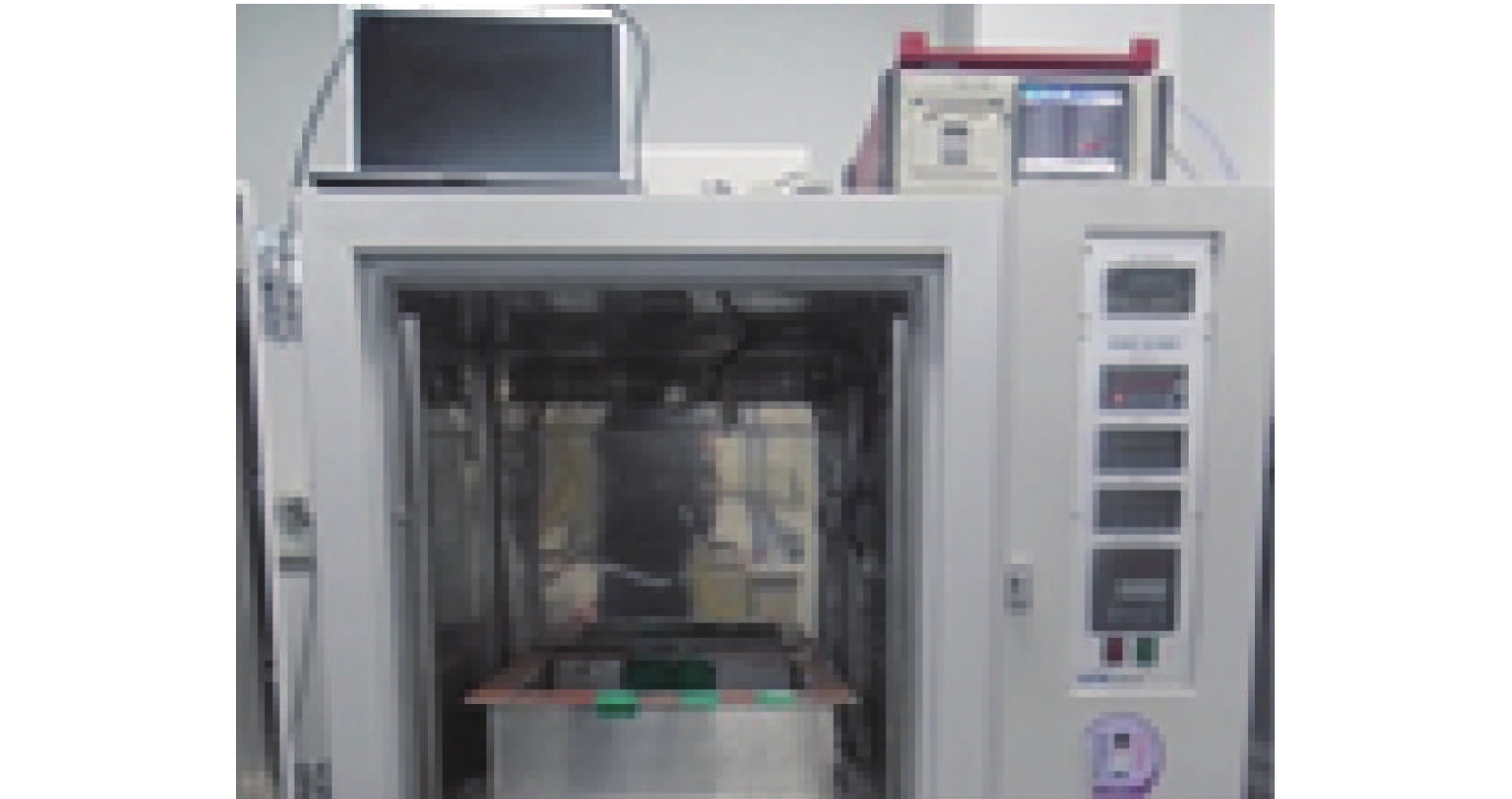
|
| Figure 3 Freezing chamber |

|
| Figure 4 Location of specimens in the freezing chamber |
The grain-size distribution curves of the soils are presented in Figure 5. The first 24 hours in the chamber was a conditioning period. Both the top and bottom plates kept the temperature at 3 °C. The first freeze started at the beginning of the second 24-hours period. The temperature of the top plate was lowered and held at −3 °C. The temperature of the bottom plate was kept at 3 °C for 8 hours. The temperature of the top plate was decreased to −12 °C after 8 hours passed. These temperature were kept for 16 hours. The first thawing process starts at the beginning of the third 24-hours period. The top plate temperature increased to 12 °C for 16 hours. After that during the next 8 hours the temperature were kept at 3 °C and it is finish of the 1st cycle freezing-thawing process. The 2nd cycle of freeing-thawing was done like 1st cycle freezing-thawing. The test consists of totally 2 freezing-thawing cycles.
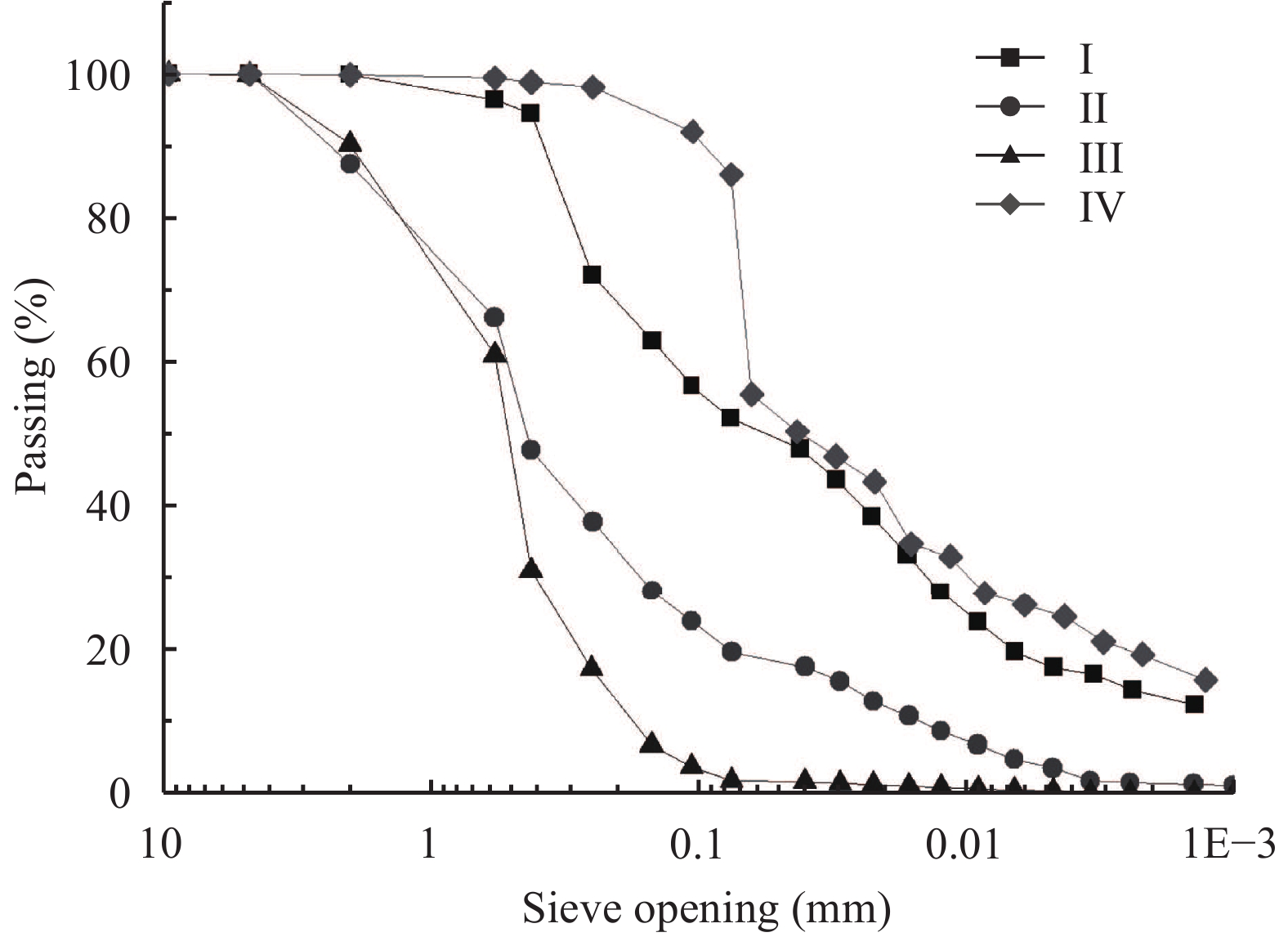
|
| Figure 5 Grain size distribution curves of soil specimens |
The freezing tests were performed to understand frost susceptibility of the soil and to predetermine possible frost action to a structure. The values of the frost heaving results of the soil specimens after the freezing test are presented in Figure 6. Some curves show different frost heaving resulting from the freezing test. In one experiment, the specimens received the frost heaving force and amount simultaneously.
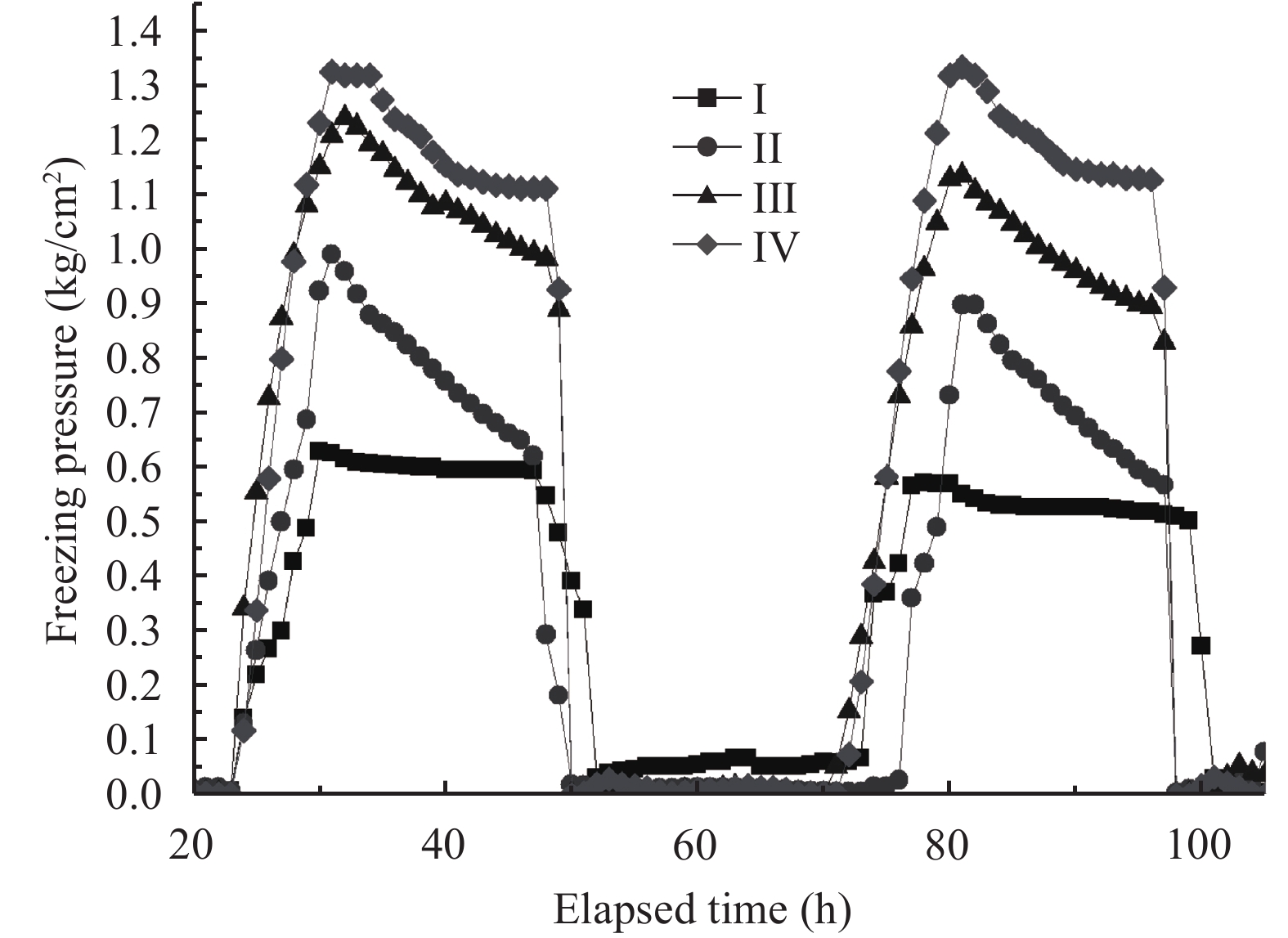
|
| Figure 6 The freezing pressure curves of soil specimens, according to ASTM |
The freezing test followed ASTM (American Society for Testing and Materials), for comparison with TRRL (Transport Research Road Laboratory) testing, and showed some differences, as shown in Figure 7. Results of frost heaving amount according to ASTM and TRRL were shown in Figures 8, 9.

|
| Figure 7 The freezing pressure curves of soil specimens, according to TRRL |
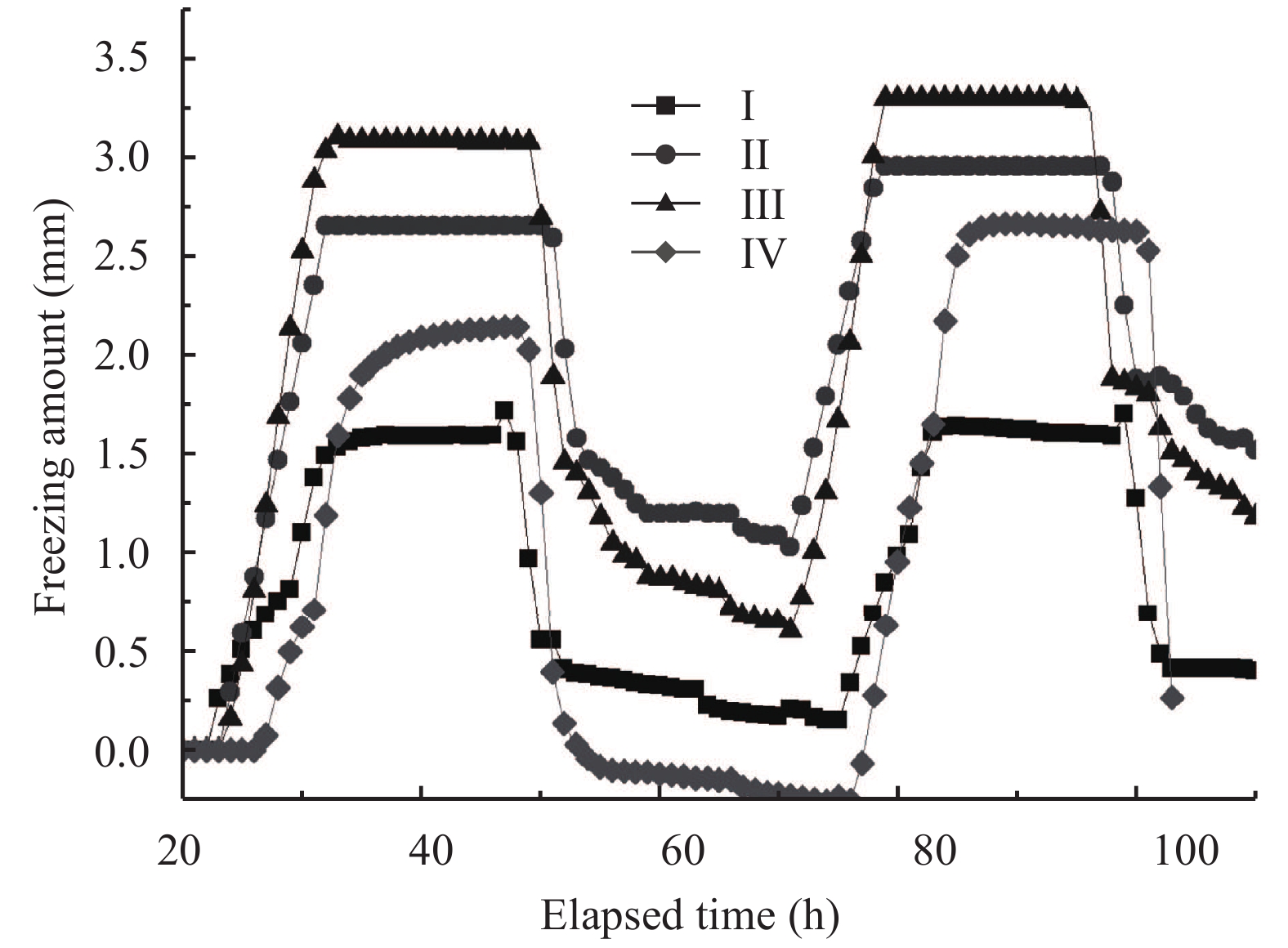
|
| Figure 8 The frost heaving of soil specimens, according to by ASTM |
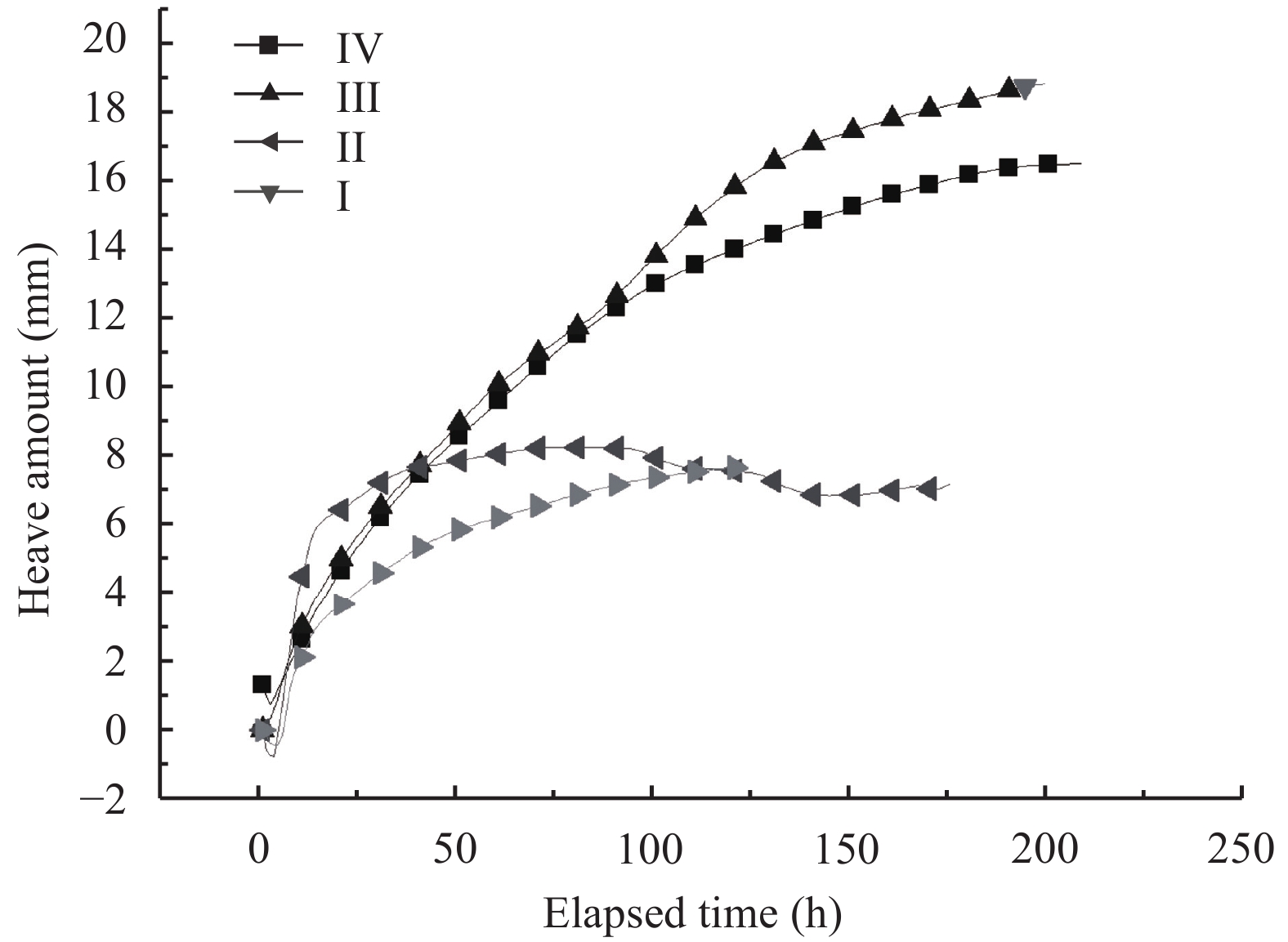
|
| Figure 9 The frost heaving of the soil specimens, according to TRRL |
The freezing pressure and heaving amount of soil specimens gave different results, which showed the frost susceptibility of the soil specimens. Taking into account the TRRL results, frost-susceptibility properties like frost heaving could reach more than 18 mm and heaving pressure could reach 4 kg/cm2. The sample height was 20 cm. Results of this size (to scale) could damage roads and another light weight constructions.
5 ConclusionsOur freezing experiments showed high-value frost-susceptibility criteria for silty-clay soil types. The value of the quantity for silty-clay soil ranged from 8 mm to approximately 20 mm; and heaving pressure ranged from 1 to 4 kg/cm2. These results estimate the sensibility of silty-clay soils to the freezing process. It is especially essential to consider frost-susceptibility results during the design of a retaining wall. Also, the results of the freezing tests show dangerous data for retaining structures under the conditions found in Kazakhstan.
| Beskow G, 1935. Soil freezing and frost heaving with special application to roads and railroads. The Swedish Geological Society, Ser. C. (Translated by Osterberg JO, Northwestern University, 1947), 375(3): 67–75. |
| Zhussupbekov A, Zhunisov T, Shakhmov Z, 2011. Influence of geological conditions on historic monuments in Kazakhstan. Proceedings of Special Session on Geo-Engineering for Conservation of Cultural Heritage and Historical Sites. The 14th Asian Regional Conference on Soil Mechanics and Geotechnical Engineering, Hong Kong, China, pp. 111–114. |
| Zhussupbekov A, Shakhmov Zh, Shin E, et al., 2012. Challenges for transportation geotechnics in extreme climates of Kazakhstan and Korea. Advances in Transportation Geotechnics II: CRC Press Taylor & Francis Group, 2nd International Conference on Transportation Geotechnics, Hokkaido, Japan, pp. 655–660. |
| Zhussupbekov A, Utepov Ye, Shakhmov Zh, et al, 2013. Model testing of piles in a centrifuge for prediction of their in-situ performance. Journal Soil Mechanics and Foundation Engineering, 50(3): 92–96. DOI: 10.1007/s11204-013-9217-9 |
 2017, 9
2017, 9


